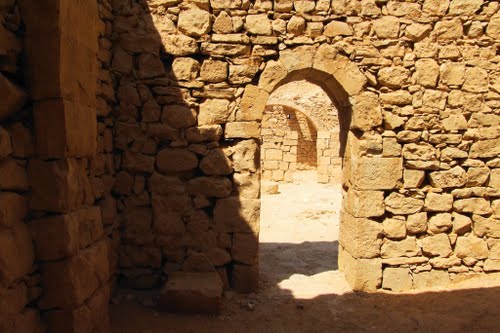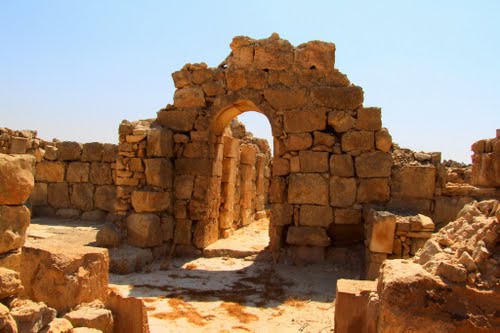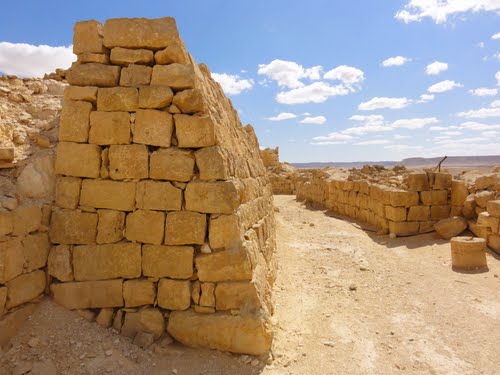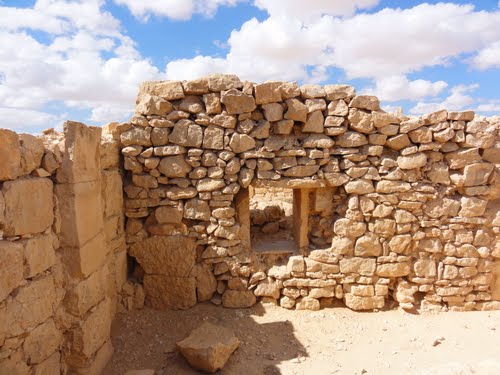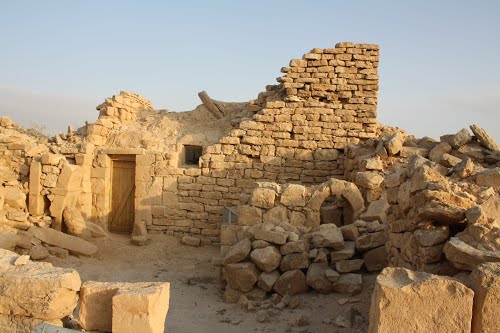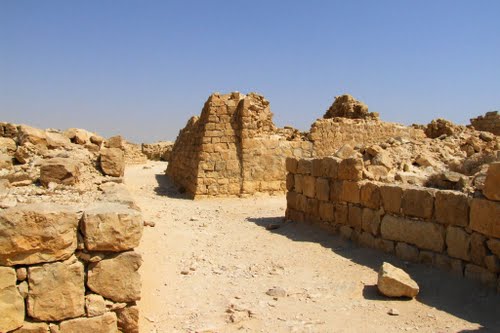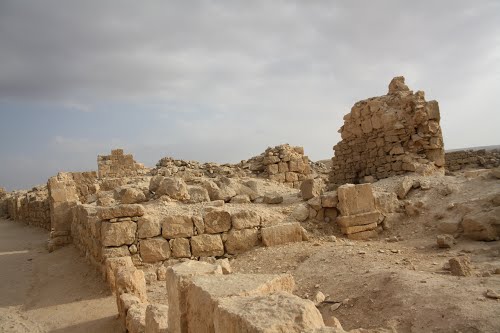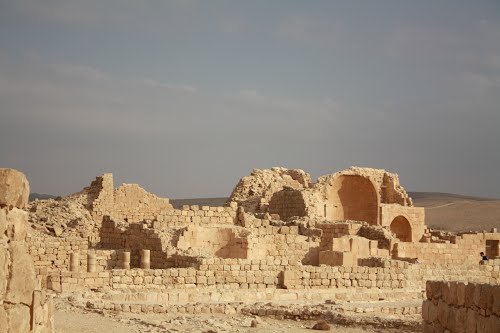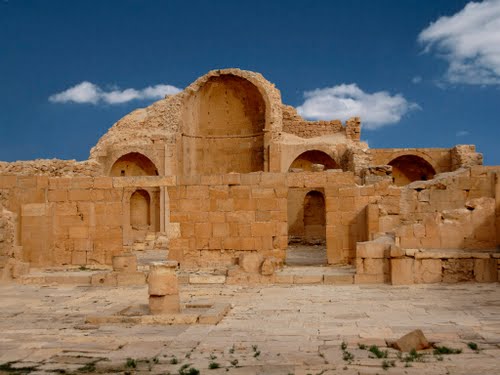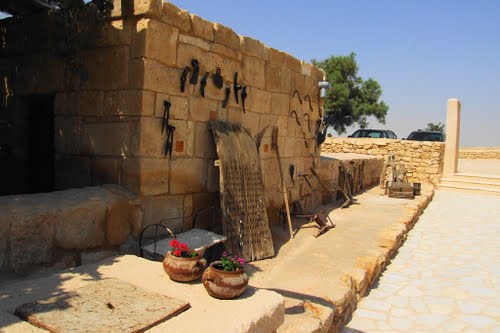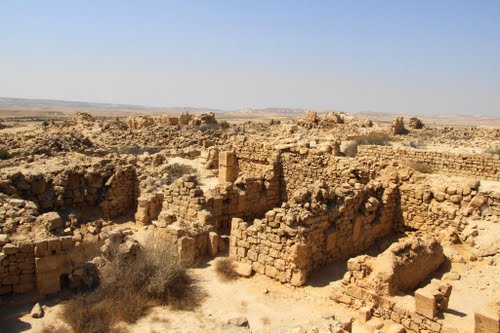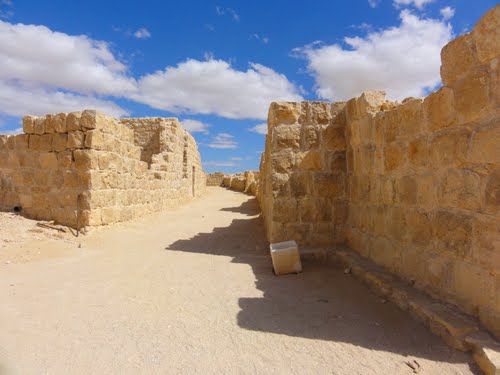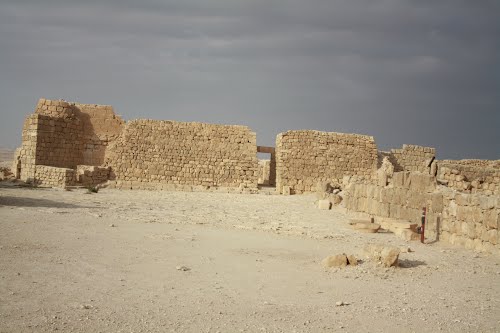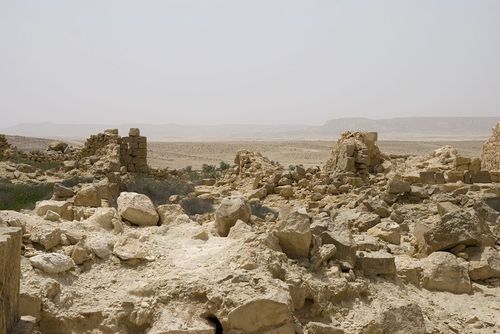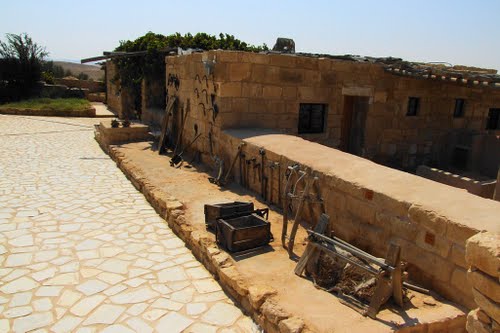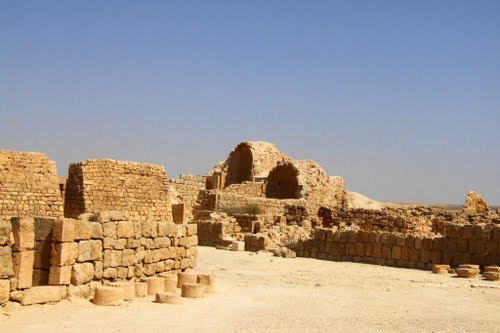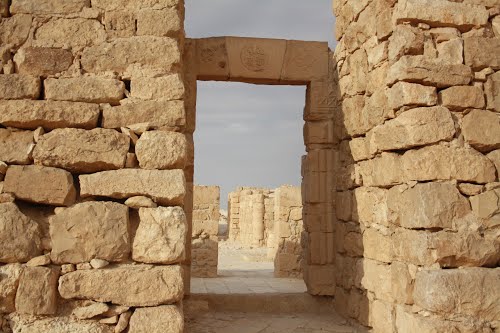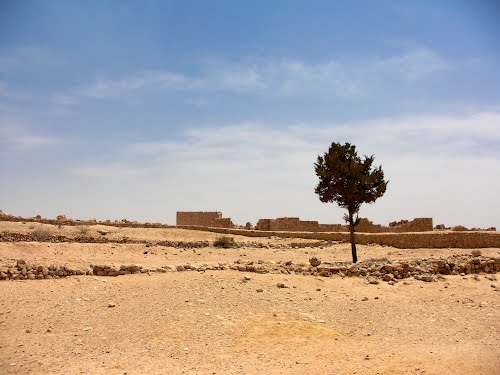Shivta, is an ancient city in the Negev Desert of Israel located 43 kilometers southwest of Beersheba. Shivta was declared a UNESCO World Heritage Site in June 2005.
History
Long considered a classic Nabataean town on the ancient spice route, archaeologists are now considering the possibility that Shivta was a Byzantine agricultural colony and a way station for pilgrims en route to the Saint Catherine's Monastery in the Sinai Peninsula.
Roman ruins from the first century BCE have been unearthed in the southern part of the town, but most of the archaeological findings date to the Byzantine period. Shivta’s water supply was based on surface runoff collected in large reservoirs.
Three Byzantine churches (a main church and two smaller churches), 2 wine-presses, residential areas and administrative buildings have been excavated at Shivta. After the Arab conquest in the 7th century CE, the population dwindled. It was finally abandoned in the 8th or 9th Century CE.
In 1933-34, American archaeologist Harris D. Colt conducted a dig at Shivta. The house he lived in bears an inscription in ancient Greek that reads: “With good luck. Colt built (this house) with his own money."
The wine presses at Shivta give an insight into the scale of wine production at the time. According to the calculations of archaeologists, the Nabatean/Byzantine village of Shivta produced about two million liters of wine.
Adjacent to the site is a large farm that uses Nabatean agricultural techniques of irrigation, sowing and reaping.

